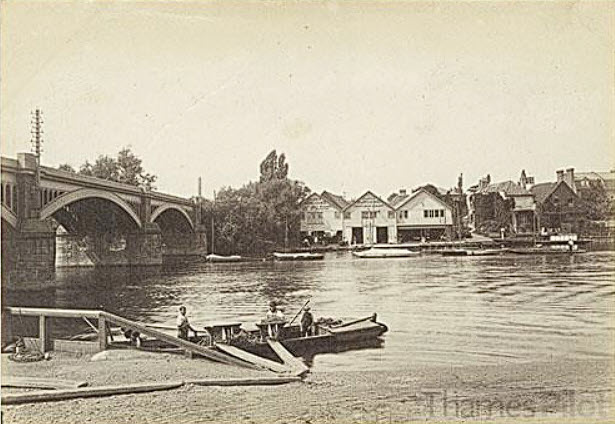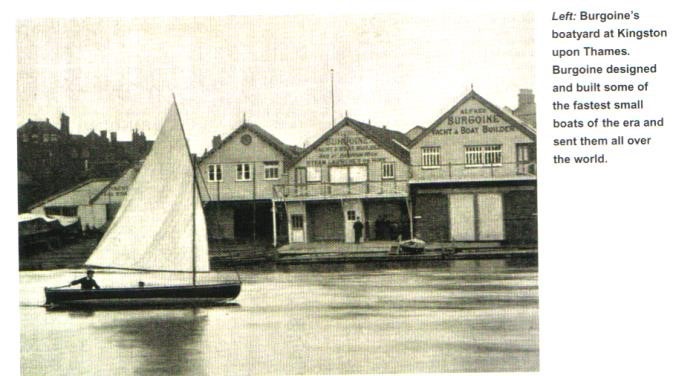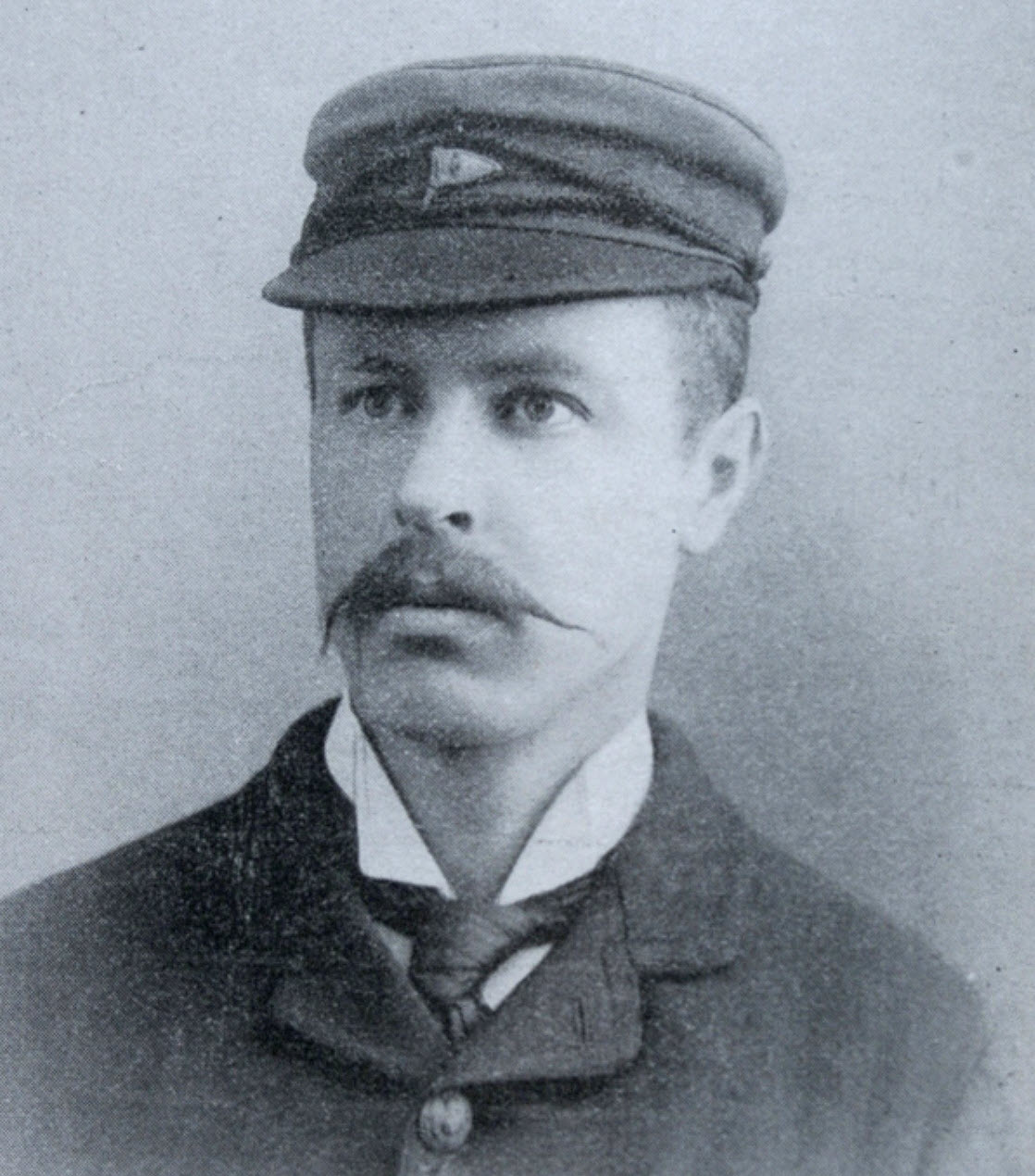Deep Research
From the beginning, two men towered over A-Rater design: Alfred Burgoine and Linton Hope. These pioneers had markedly different philosophies, yet each produced remarkably successful boats that defined the class.
Burgoine's boatyard by Kingston Railway Bridge
Alfred Burgoine – A master boatbuilder based at Hampton Wick (Kingston), Burgoine was responsible for many of the early Thames A-Raters and other popular Thames classesthames-sailingclub-history.thecomputerguy-it.co.uk. He was even reputed to be a “Royal boatbuilder” for Queen Victoria’s entouragenationalhistoricships.org.uk. Burgoine’s designs tended to exploit the rating rule by maximizing sail area at the expense of waterline lengthpublications.aston.ac.uk. His boats carried towering spreads of canvas and were built beamy (wide) for stability, with relatively short hulls to keep the rating downpublications.aston.ac.uk. This gave them tremendous power in light winds – ideal for river sailing where catching the faint breeze above the tree-lined banks is key – though at the cost of some speed in heavier winds or when hull length mattered upwindpublications.aston.ac.uk. A classic Burgoine creation is Ulva (built 1898), which set a new benchmark for A-Rater performance. Ulva’s first owner, Foster Knowles, found her “simply unbeatable” in light airs and she “marked a plateau in rater design”, being so successful that later boats struggled to improve upon herthames-sailingclub-history.thecomputerguy-it.co.uk
thames-sailingclub-history.thecomputerguy-it.co.uk. Burgoine also produced Carina (1902), hailed by Linton Hope as perhaps the finest Thames racer of her day – “No matter what the weather… Carina is sure to be either first or in the first three”thames-sailingclub-history.thecomputerguy-it.co.uk
thames-sailingclub-history.thecomputerguy-it.co.uk. Other Burgoine designs like Kingfisher (1909) and My Lady Dainty (1911) became multiple Queen’s Cup winners and club championsthames-sailingclub-history.thecomputerguy-it.co.uk
thames-sailingclub-history.thecomputerguy-it.co.uk. His prolific output and consistent success earned Alfred Burgoine a reputation as a “towering figure in Thames yachting”thames-sailingclub-history.thecomputerguy-it.co.uk.
Linton Hope – In contrast to Burgoine, Linton Chorley Hope was a naval architect known for bold, experimental ideas. Hope was an Olympic gold-medal sailor and an active voice in the yachting press, advocating lighter, more extreme designsthamessailingclub.co.uk. He embraced the “skimming dish” concept – very long waterlines, minimal beam, shallow draft – to create river racers that could slice through the water with minimal resistancethamessailingclub.co.uk publications.aston.ac.uk. Under the rating rule, this meant accepting a smaller sail area in exchange for a longer hull. Hope’s A-Raters were often narrower and finer-lined than Burgoine’s, favoring speed when heeled and to windward in a breezepublications.aston.ac.uk publications.aston.ac.uk. His designs (built by various yards) introduced new levels of daring. For example, Scamp (designed by Hope in 1906) was long and relatively narrow; Hope himself noted Scamp had a longer waterline but less beam than Burgoine’s Ulva or Carina, which made Scamp “inferior in light conditions but faster in stronger winds and better to windward”. Another Hope creation, Surf (1908), was a notably advanced boat – she originally bore the whimsical name Sea Miaou – and by 1930 had joined TSC’s fleet, where she proved “particularly quick on a fetch or close reach”thames-sailingclub-history.thecomputerguy-it.co.uk thames-sailingclub-history.thecomputerguy-it.co.uk. Linton Hope’s most famous contribution is Vagabond (designed 1907). Vagabond had an unusually narrow beam and initially enjoyed little success (her extreme design may have been ahead of its time)thames-sailingclub-history.thecomputerguy-it.co.uk. But Hope’s ingenuity laid the groundwork for future innovation: decades later, Vagabond would become the test bed for twin sliding seats and the first trapeze in sailing – ideas that trace back to Hope’s lightweight philosophy (more on that soon)thamessailingclub.co.uk thamessailingclub.co.uk. Linton Hope’s willingness to “challenge the conventions of yacht design” produced Thames A-Raters that were “the most exciting racers of their day”, outpacing much larger yachts in light airsthamessailingclub.co.uk. His influence extended beyond the Thames, as he also designed sailing canoes and seagoing yachts, spreading the gospel of the skimming dish far and wide.
It’s worth noting that not all notable A-Raters came from Burgoine or Hope. Other designers made contributions – for instance, Frederick H. “Jack” Jackson, a talented amateur, designed and owned a series of A-Raters all named Caprice. His fourth boat, Caprice IV, built 1911 by J. Townsend of Bourne End, became one of the class’s most successful racersthames-sailingclub-history.thecomputerguy-it.co.uk
thames-sailingclub-history.thecomputerguy-it.co.uk.
Even Sir Thomas Sopwith’s aircraft engineers got involved: in the 1920s, Sopwith’s chief engineer Fred Sigrist campaigned A-Raters (like Viva and Caprice) and applied cutting-edge materials and tricks from aviationthedailysail.com. This culture of innovation, fostered by designers like Burgoine and Hope, ensured that Thames A-Raters would remain at the forefront of small-boat development for decades.



